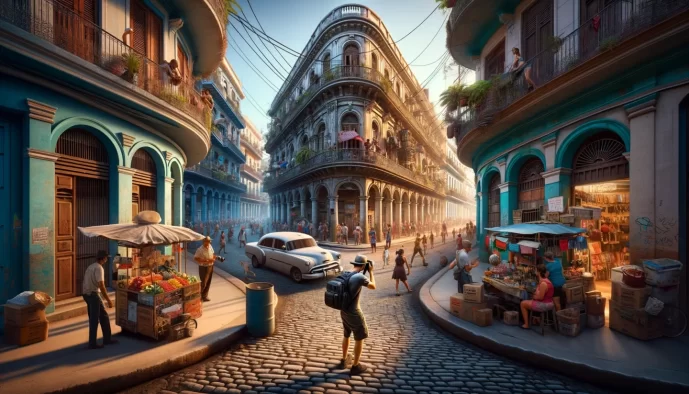Master Street Photography
Unlock street photography mastery: from candid techniques to post-processing finesse.

Understanding Street Photography
Defining the Genre
Street photography captures the human condition in public spaces. It’s about documenting everyday life and society on the streets. Unlike other forms of photography, it’s candid and spontaneous, focusing on the story rather than aesthetics alone.
Ethical Considerations
Ethical practice in street photography is crucial. Respect for subjects, awareness of local laws on privacy, and avoiding exploitation or harm are key. If someone objects to being photographed, it’s responsible to honor their wishes.
Essential Gear for Street Photography
Camera Selection
A discreet and fast camera is ideal. Mirrorless cameras are excellent for their compact size and quiet operation. Full-frame sensors offer better low-light performance, but crop sensors are more affordable and lighter.
Lens Choices
Prime lenses with focal lengths between 28mm and 50mm are preferable. They’re sharp, fast, and mimic the human eye’s field of view. Zoom lenses provide versatility but can be bulkier and slower.
Accessories for Flexibility
Consider a strap for easy access, extra batteries, and memory cards. A polarizing filter can reduce reflections and enhance the sky, adding depth to your images.
Technical Skills Development
Mastering Exposure
Understanding the exposure triangle (aperture, shutter speed, ISO) is essential. Street scenes often require quick adjustments, so learning to use your camera’s exposure compensation feature is beneficial.
Focusing Techniques
Use autofocus with zone or dynamic area AF for moving subjects. For predictable scenes, pre-focusing manually at a certain distance can help you capture the action faster.
Composition and Framing
The rule of thirds, leading lines, and frame within a frame can create compelling compositions. Always be aware of the background and edges of your frame to avoid distracting elements.
Creative Approaches
Capturing the Decisive Moment
Henri Cartier-Bresson’s concept of the "decisive moment" is about capturing an event that is ephemeral and unique. Anticipate actions and be patient; sometimes the shot comes to you.
Storytelling through Images
Each photo should convey a story. Look for juxtapositions, interactions, or contrasts that speak to a larger narrative. The best stories are those that resonate with universal human emotions.
Playing with Light and Shadows
High contrast scenes with dramatic light can create mood and mystery. Early morning or late afternoon, known as the golden hours, offer the most enchanting light.
Overcoming Challenges
Dealing with Crowded Places
In crowded areas, focus on individuals or small groups to isolate stories. A higher vantage point can offer a unique perspective and declutter the scene.
Handling Low Light Conditions
Push your camera’s ISO higher and open the aperture. A monopod can help steady the camera without the bulk of a tripod. Embrace the grain; it adds character.
Approaching Strangers
Confidence is key. Smile, be polite, and if asked, explain your art. Have contact information handy in case they want a copy of the image. It’s about building trust and rapport.
Post-Processing Techniques
Editing for Impact
Post-processing should enhance, not overpower. Adjust exposure, contrast, and sharpness to refine the image. Always keep the original mood and integrity of the scene.
Black and White vs. Color
Black and white can focus on the story by removing the distraction of color. However, color can add a powerful layer of meaning. Choose based on what strengthens the image’s narrative.
Building a Portfolio
Selecting Your Best Work
Curate your images ruthlessly. Only include shots that meet your highest standards and reflect your unique vision. Quality trumps quantity every time.
Online Presentation
A clean, organized website or a dedicated Instagram account can showcase your work effectively. Ensure each image is presented with clarity and the correct resolution.
Networking with Other Photographers
Engage with the photography community. Attend workshops, exhibitions, and photo walks. Online forums and social media groups can offer critiques and widen your circle.
Capturing the pulse of the street is a dance between the photographer and the fleeting moments of life. It’s not just about the gear or the technique; it’s about the story that unfolds at the crossroads of chance and readiness. The streets are alive with tales waiting to be told—grab your camera and become their narrator.